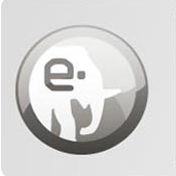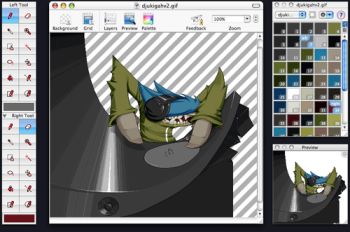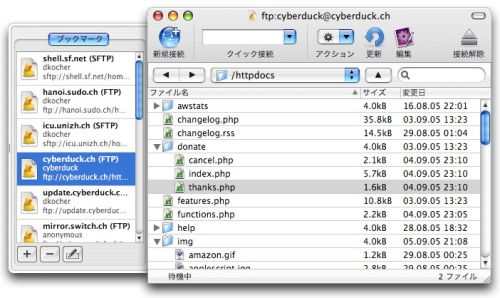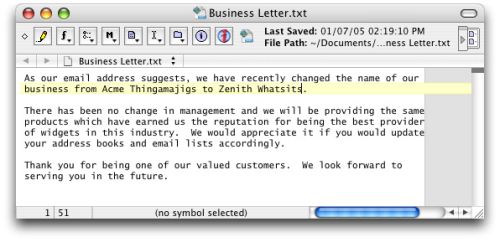Author Archive
Monday, December 18th, 2006
Everybody’s heard of shareware and freeware, right? What about donationware or postcardware? There are lots of different kinds of wares out there. What we’re talking about here is the agreement or understanding about the use of the software between the developer or publisher and the purchaser or user of the software. There may be some confusion, though, as to what each of these terms exactly means.
The concept of freeware is easy to understand. This usually means that the software is yours to use however you wish, free of charge. Sometimes certain types of uses are restricted, however. Some developers or publishers will allow the software to be used for free for personal use only, and not for commercial use or for making a profit. Other times, they may require that the software not be used for any government or military purpose. It depends on the personal values and beliefs of the creators of the software.
Shareware is pretty straightforward, too. The developer or publisher is sharing this software with you so that you may try it out to see if you’d like to purchase it. Sometimes shareware isn’t fully functional software (some call it ‘crippleware’), in order to persuade you to buy the full version. This was pretty common at one time and still is common with gaming software, but lately lots of shareware is offered as fully functional so that users can get a better idea of all of the features. Developers also may limit the length of time that the software will be fully functional or that it will work at all. This type of software is often called a demo. The demo software may become locked after a certain trial period and then can only become functional again after a registration code is purchased and entered into the program.
So, what about donationware or postcardware? These types of software aren’t seen quite as often, but are most similar to freeware. Essentially, they are free, but the developer usually asks that if you like the software or find it useful you make a donation so that development costs can be recapped and/or that further development can take place. Often, a small number of donors out of a larger user community can keep development alive. Postcardware, on the other hand, is just a request from the developer that you send them a postcard to let them know you like their software. It’s more of a feel-good gesture than anything else, but a small price to pay for the privilege of using good software.
There are other types of wares that can be found on the Internet, but most will fall under the types outlined above. The bottom line is that the developer or publisher can decide however they would like the software to be used, but it’s up to the users to honor that request.
Posted in Freeware, Internet, Main, Shareware | 1 Comment »
Wednesday, December 6th, 2006
One of those programs that makes life easier if you have a website or blog is an FTP program. Sure, you can use the command line client, or, worse yet, internet explorer’s built-in FTP functionality, but neither of these solutions is ideal. If you do a lot of FTP transfers, you need a full-featured program dedicated to this purpose. Filezilla is a quick and easy to use FTP program for Windows that you should check out.
The install is simple and takes less than a minute after downloading the installation file. After installing, start the program and you’ll find an interface with several window frames as well as some boxes at the top to input the address of the ftp server and your username and password. Connecting is as simple as filling in these boxes and hitting Enter.
It’s easy to drag and drop files from the Remote Site frame at the right into the frame at the bottom to download files. One thing you’ll have to remember is that you have to click the ‘Q’ (Queue) button on the toolbar at the top of the window, though. This is actually a great feature because it allows you to correct your mistakes before you make them. No transfers are completed until you are ready.
Another cool feature is that when you navigate through the menus, a brief help message appears on the status bar at the bottom of the screen to explain the command option. This also works with the toolbar at the top of the screen. I expected to see tooltips pop up when hovering over the buttons, but this works just as well and it appears instantly instead of after the pause that you have to wait through with tooltips.
Filezilla is freeware and actively maintained, so you can expect to see it updated regularly with lots of useful features.
Posted in Freeware, Main, Open Source, Utilities, Windows | No Comments »
Tuesday, November 14th, 2006
 If you have been around the web for a little while, you’ve probably heard of PHP or PHP: Hypertext Preprocessor. This is one of the most popular web programming languages right now and for good reason. It’s flexible, powerful, relatively easy to learn, and, best of all free. If you have been around the web for a little while, you’ve probably heard of PHP or PHP: Hypertext Preprocessor. This is one of the most popular web programming languages right now and for good reason. It’s flexible, powerful, relatively easy to learn, and, best of all free.
The problem I had with beginning to program in PHP,though, was that I had no place to test it before uploading to a web server. So, I went to the search engines and found a solution: MAMP. This is a development environment consisting of Macintosh – Apache – MySQL – PHP.
I’m doing my development on my trusty little iBook, so I had to find something that would work with Macintosh. MAMP is perfect. After a rather large download, MAMP is easy to install. Simply unzip the file, mount the disk image (.dmg) file by double-clicking, and then drag and drop the MAMP folder from the disk image to your Applications folder.
Using MAMP is as easy as double-clicking the application file to turn on the servers. After that, all you have to do is copy your web files into the ‘htdocs’ folder inside the MAMP application folder and navigate to ‘localhost:8888’ in your browser.
You may know that OS X already comes with versions of Apache and PHP installed. So, why use MAMP? Because, MAMP puts it all together in one easy install. You don’t have to mess around with configuration files or downloading and installing MySQL. The installation doesn’t touch any of the important files already on your Mac and if you ever want to uninstall it, just drag the MAMP folder to the trash can. And one more great reason to use MAMP? It’s freeware.
Posted in Developer, Freeware, Internet, Mac Stuff, Main, Open Source, Programming | 3 Comments »
Sunday, November 12th, 2006
 If you’re a switcher from Windows to Mac like me, you probably have used MS Paint to do simple bitmap graphics editing. When I started using my Mac, though, I wanted the same sort of functionality that I’d had before. I wanted something simple, but that could get the job done. If you’re in the same boat, you’ll like Open Sword Software’s Pixen. If you’re a switcher from Windows to Mac like me, you probably have used MS Paint to do simple bitmap graphics editing. When I started using my Mac, though, I wanted the same sort of functionality that I’d had before. I wanted something simple, but that could get the job done. If you’re in the same boat, you’ll like Open Sword Software’s Pixen.
Besides having a cool name, Pixen is able to do all of the simple bitmap editing tasks you were used to doing in Paint. You can edit an image pixel by pixel when zoomed in and also preview the image as it will appear normal size. Pixen has some advanced an powerful features that make it much more useful than Paint, though.
With Pixen you can work in layers. This is a feature you would expect to find in a much fancier package. You can also create and edit animated images to create an animated gif or even a quicktime movie. Pixen has many different options that can be configured to your own editing style and, best of all, it’s freeware.
Posted in Freeware, Main | 2 Comments »
Wednesday, November 8th, 2006
 Sorry, Windows users. This one’s for Macs only. When I started a new web page recently I quickly got fed up with the online ftp options offered by my host. It was nice that the hosting service offered a couple of web ftp clients, but the problem was that they didn’t have the features I wanted and were just plain difficult to use, not to mention unreliable. So I went searching for an alternative. Sorry, Windows users. This one’s for Macs only. When I started a new web page recently I quickly got fed up with the online ftp options offered by my host. It was nice that the hosting service offered a couple of web ftp clients, but the problem was that they didn’t have the features I wanted and were just plain difficult to use, not to mention unreliable. So I went searching for an alternative.
Everybody loves getting something useful for free, so you should love Cyberduck. It’s a freeware ftp client with an intuitive, easy to use interface and all the features you would need for the most common file transfer tasks. Cyberduck will remember your last connection settings and allow you to quickly reconnect to the last ftp server. Once there, you’ll be able to upload and download files as well as rename or change permissions on those files as needed.
The basic ftp functions are included on the toolbar at the top of the window. Uploading is accomplished by clicking the upload button and then selecting the file in the dialog box that appears. Downlaoding is even more simple. Either double click on the file in the Cyberduck window to download to the default download directory or drag and drop the file from Cyberduck to your finder window. When you’re finished, click the disconnect button and you’re done.
If you get stuck, check out the great online help linked from the Cyberduck site. There are a few more advanced features in Cyberduck, but if you have a need for a no-frills ftp client, Cyberduck is a great choice.
Posted in Main | 1 Comment »
Sunday, October 29th, 2006
TextEdit is the default text editor packaged with Macs, and though it isn’t quite as bad as Windows Notepad, it’s close. Since I keep lots of notes in text files on my computer as well as using a text editor for some web development, I found it necessary to search for a replacement.
What I found was a free program from Bare Bones Software called TextWrangler. This program is actually a sort of light version of their famous (in the Mac world) advanced text editor called BBEdit. TextWrangler is freeware while BBEdit is not.
I’ve had trouble from time to time when trying to copy and paste text from TextEdit into my wordpress blogs. Sometimes junk characters were included because of the default rich text formatting of TextEdit. This is one of the basic problems that TextWrangler has solved. The file stays in plain text with no extra characters or formatting included. (more…)
Posted in Main | No Comments »
Sunday, October 29th, 2006
 How much does it cost to buy the latest version of Photoshop? As of this writing, you’ll have to pay almost $600. I don’t know about you, but that’s a lot of change for me. The good news is that there’s a free alternative available: The GIMP. How much does it cost to buy the latest version of Photoshop? As of this writing, you’ll have to pay almost $600. I don’t know about you, but that’s a lot of change for me. The good news is that there’s a free alternative available: The GIMP.
The question always comes up (and with good reason) about the name. What the heck does it mean? It stands for GNU Image Manipulation Program. The GNU part refers to the licensing of the software and just means that the software can be free or for sale, but must include the source code or access to it so that users can modify it if they want to.
The GIMP is available free for Windows, Mac, and Unix systems, but the Windows version was used for this review. Installation was simple after downloading the installation package. Before the program itself can be installed, though, a separate file containing necessary libraries must be downloaded and installed. Each of these files installed in just a couple of minutes without trouble on my test machine. (more…)
Posted in Main | 1 Comment »
Tuesday, October 10th, 2006
 Everyone who uses Windows has used Notepad at one time or another. Notepad is great for quick and simple editing tasks. If you need to change a few words in a small text file, it’s perfect. Many users get frustrated, though, by the lack of a few more advanced options that would make it a much better editor. If you’ve ever tried to edit a very large file or even a unix file in Notepad, you know what I mean. Everyone who uses Windows has used Notepad at one time or another. Notepad is great for quick and simple editing tasks. If you need to change a few words in a small text file, it’s perfect. Many users get frustrated, though, by the lack of a few more advanced options that would make it a much better editor. If you’ve ever tried to edit a very large file or even a unix file in Notepad, you know what I mean.
A great choice for those frustrated users is TextPad from Helios Software Solutions. TextPad is a smart plain text editor that has many advanced features available for complex editing, but it is also an inexpensive and lightweight solution for those who just need a basic text editor. (more…)
Posted in Main | 1 Comment »
Sunday, October 8th, 2006
After about a year of never being completely happy with Safari, I decided to give Mozilla Firefox a shot. I’m a relatively new Mac user, having purchased an iBook about a year ago. That wasn’t my first Mac, but pretty close.
I tried to use the software that came on it as much as possible in order to save money and also to make things less complex. I wanted to spend more time actually using the computer to do some writing rather than playing around with new software all the time. Besides having to install Microsoft Office (sorry, I’m used to using Word), I’ve used almost exclusively what came with the computer. That includes Safari. (more…)
Posted in Main | 1 Comment »
|
|
|

 If you have been around the web for a little while, you’ve probably heard of PHP or PHP: Hypertext Preprocessor. This is one of the most popular web programming languages right now and for good reason. It’s flexible, powerful, relatively easy to learn, and, best of all free.
If you have been around the web for a little while, you’ve probably heard of PHP or PHP: Hypertext Preprocessor. This is one of the most popular web programming languages right now and for good reason. It’s flexible, powerful, relatively easy to learn, and, best of all free. If you’re a switcher from Windows to Mac like me, you probably have used MS Paint to do simple bitmap graphics editing. When I started using my Mac, though, I wanted the same sort of functionality that I’d had before. I wanted something simple, but that could get the job done. If you’re in the same boat, you’ll like Open Sword Software’s
If you’re a switcher from Windows to Mac like me, you probably have used MS Paint to do simple bitmap graphics editing. When I started using my Mac, though, I wanted the same sort of functionality that I’d had before. I wanted something simple, but that could get the job done. If you’re in the same boat, you’ll like Open Sword Software’s  Sorry, Windows users. This one’s for Macs only. When I started a new web page recently I quickly got fed up with the online ftp options offered by my host. It was nice that the hosting service offered a couple of web ftp clients, but the problem was that they didn’t have the features I wanted and were just plain difficult to use, not to mention unreliable. So I went searching for an alternative.
Sorry, Windows users. This one’s for Macs only. When I started a new web page recently I quickly got fed up with the online ftp options offered by my host. It was nice that the hosting service offered a couple of web ftp clients, but the problem was that they didn’t have the features I wanted and were just plain difficult to use, not to mention unreliable. So I went searching for an alternative.


 Everyone who uses Windows has used Notepad at one time or another. Notepad is great for quick and simple editing tasks. If you need to change a few words in a small text file, it’s perfect. Many users get frustrated, though, by the lack of a few more advanced options that would make it a much better editor. If you’ve ever tried to edit a very large file or even a unix file in Notepad, you know what I mean.
Everyone who uses Windows has used Notepad at one time or another. Notepad is great for quick and simple editing tasks. If you need to change a few words in a small text file, it’s perfect. Many users get frustrated, though, by the lack of a few more advanced options that would make it a much better editor. If you’ve ever tried to edit a very large file or even a unix file in Notepad, you know what I mean.